
I saw my first Lexus TX in the wild not long ago and I was a bit conflicted about it. It’s a massive crossover clearly on a transverse-engine FWD platform, which isn’t exactly aspirational for us car dweebs. Huh, I thought. Looks like Lexus is finally getting in on the 3-row troop transport game. It lacked the pricey gravitas of an X7 or GLS but looked fully capable of taking on the Q7, XT6, MDX, and LT70x in the suburban status derby.
That last one isn’t a real car, by the way. This alphanumeric naming soup is so overcooked that you can invent a plausible one by just mashing your fist against the keyboard. TR-55e. See?
I was driving our GS350 AWD (fist mash!) when the TX went by. Quite the contrast. I like our Lexus, it reminds me very much of what made the brand in the 90s. It’s a genuinely nice sedan, palpably well-made, flies a bit under the radar, and provides a high refinement quotient within a decent performance envelope for less money than a similar European. In my mind, this is exactly what a Lexus was designed to do. That TX? Dunno. Different beast entirely.

I have since read reviews on it and the other members of the Lexus jelly bean fleet. Critical reception is mixed and the commentariat is cruel. Glorified RAV4s and Highlanders, they scream. For hairdressers! And real estate mavens! So much for the legacy of the purebred LS400, it’s all downhill from here!
The 30 year rant continues.
Yes, 30 years. Lexus has always played in both sandboxes and someone’s always squawked about it. Sure, they made a big noise with that ambitious slap across the face of the S-Class, but the brand actually had to start making money alongside the headlines. They expanded, covering the other Euro RWD segments with the GS, SC, and eventually IS, but they weren’t going to make sufficient volume on those. So they extended the high refinement and material quality to less expensive FWD platforms: the ES and RX. Those printed the big bucks and earned the ire of enthusiasts annoyed at the idea of a FWD luxury car which couldn’t properly tingle their jollies.

We’ve even jumped on this bandwagon ourselves, and I have to say I think we missed the mark. I’m skeptical of the pejorative suggestion that the 1990s ES was little more than a rebadge for those too snooty to own a Camry but too cheap and ignorant to appreciate the RWD “champagnes” that an uncompromising auto connoisseur sips upon. The implication being, of course, that Lexus buyers didn’t know any better and were willing to settle for less.
Baloney, I say. I’m just old enough to remember when the first two generations of the ES300 hit showroom floors. They were unapologetically nice cars and well received by the public and automotive press alike. They were somewhat exclusive. And they performed. The ‘92 ES300 could pace an equivalently-priced automatic 325i, gap the V6 Audi 100S, and streak far away from the more expensive 525i and A6. The V6 was silken, and unlike the 3 Series the interior required no apologies. They even received decent handling marks for a FWD sedan. The ‘92 and ‘97 were awarded 2nd and 1st place finishes in Car and Driver comparison tests against fields of 7-8 competitors. So much for a fancy Camry.

They helped set expectations for the brand. I found an old magazine ad for the ‘92 ES300, the new sedan looking sleek and fast and the headline instructing owners to “Revise your E.T.A.” That’s right. Lexus owners, like the machines, are sophisticated. And important! They have people and places waiting for them. Things can’t happen until they arrive, so they don’t have clock-in times. They have E.T.A.s. Arrogant, but subtly so, and effective. They advertised as if they’d always been there, always been the standard, even though they were all of 3 years in the market. Between the impeccable machinery and the power suit advertising, we understood Lexus to be a refined, capable, and tasteful machine–the ES very much included.

Well, that’s ancient history and even I am now becoming skeptical and worried about where this car division is heading. They’ve plunged deep into FWD crossovers, which is appropriate for the market, but seem close to giving up on the RWD cars that have anchored them to the luxury realm. They don’t make my GS anymore. The IS is getting old. The LS is gorgeous but selling poorly. The LC strikes me as a brilliant one-off flagship that won’t be reinvested in. The V6 is going bye-bye and I’m wondering if the V8, like the LC itself, will make it past the current model cycle. The Lexus lineup is in danger of becoming lopsided.
Even the slogan has deteriorated from the on-point Relentless Pursuit of Perfection to the forgettable Experience Amazing. Who’d they hire for that one? I’m not sure what comes to mind when walking up to a UX300, but “I shall now experience amazing” isn’t it.
So if they’re not playing in the fun sandbox anymore, they’re still hitting it out of the park in the refinement and sophistication that set the ES and RX apart, right? Not so sure. The crossover interiors get generally high marks for material quality and features, they seem to have figured out their long-running infotainment problems, and they ride on well-sorted chassis that deliver cohesive and refined (though often not sporty) ride and handling. So far so good, really.

The ascendant powertrain lineup is where it becomes concerning. It is capable but dull, and that most un-Lexus of words: unrefined. It’s nearly all 4 poppers, some with turbos, some with hybridization, some with both. It starts with either the 203 hp 2.5-liter naturally aspirated four-cylinder engine from the RAV4 and prior Camry, or a 196 hp hybridized 2.0-liter four from the Corolla Cross. You’ll have to experience the amazing on your own to decide which method of buzzing to 60 in eight to nine seconds is more shameful for a $43,000+ near-luxury offering.
The powertrain nomenclature has become complicated and unintuitive. ES250s and NX250s get the 2.5, which makes sense. The UX300h gets the 2.0 Hybrid, which doesn’t. The RWD IS300 also gets a 2.0…turbo. Not hybridized. The AWD IS300 is neither 2.0 hybrid nor 2.0 turbo, nor 3.0 anything. It’s a detuned 2GR 3.5-liter V6. Makes sense to me!
Any model with a 350 now has the 275 hp 2.4-liter turbocharged four cylinder, unless it’s an IS or ES. Those still have the full-strength 3.5-liter V6. A 350h denotes the 2.5 liter naturally aspirated hybrid making roughly 240hp…unless you have an ES. Then it makes only 215 hp and is called the 300h. No, not the same hybrid as the UX300h.
Geezus.
There’s more. Further up the power ladder is the 500h. If you were excited that the crossover fleet can get the LC500’s 5.0 liter V8, make sure you note that little “h” at the end. It’s another hybrid! Nope, not the V6 hybrids in the LS 500h and LC500h. In the crossovers, 500h means a combination of the turbo 2.4 with electric motors. It makes a fairly serious set of power figures that somehow doesn’t quite materialize in the usual drag race stats. Quick but not fast, and barely competitive for the price and power rating. Passing times are unusually brisk, though, so it appears to be responsive. This powertrain uses a 6-speed automatic rather than the planetary CVT.

Finally, a new pair of plug-in hybrid systems add both power and electric-only range. If you paid an eye-watering MSRP for your new Lexus crossover and have a “+” on the tailgate, you got a plug-in. The 450h+ is a version of the 2.5 liter hybrid. It makes 300 hp, a lot of torque, and will generate similar acceleration numbers as the 500h. The 550h+ lashes a detuned version of the 2GR 3.5-liter V6 to electric motors to provide 400 hp, but it runs through the planetary CVT. That one is fast, but has been panned for the rough fixed-rpm engine note.
I haven’t even discussed the RWD truck chassis SUVs. We’ll skip those.
These powertrains are scattered unevenly across the FWD lineup and provide an alphanumeric mumbo jumbo to decipher. From bottom to top in the transverse model lineup:
UX300h. $38,000 to $48,000.

Thirty-eight thousand won’t get you much these days. But it will get you a Lexus. Well, it will get you a flashy but slow subcompact hatchback with a Lexus badge on it. Authenticity is up for debate. The little runt has received good marks for ride, handling and interior quality and poor marks for its lame powertrain. It is overshadowed by the suddenly fashionable Prius, which raises a question: at which point does your entry-level model damage the brand rather than expand it?

Whatever the answer, this much is clear: as the entry point for Lexus, this is no 1992 ES300. Of course, it doesn’t cost an inflation-adjusted $65,000 either. Entry-level luxury cars were bleeping expensive 30 years ago.
ES250AWD, ES300h, ES350. $43,000 to $54,000.

The ES became a stodgy Buick-slayer with the frumpy 2002 redesign, but the current generation resurrected it with a far sleeker exterior, high quality interior, and the correct powertrain option of a refined and powerful V6. An ES350 FSport with the adaptive dampers and Mark Levinson is still a very nicely executed Lexus sedan. You can get slow and noisy 4-poppers if you need either AWD or better fuel economy.

NX250, NX350, NX350h, NX450h+. $42,000 to $64,000.

The competitor to the transverse-platform X2, Q3, XC40. Four engine options on this compact crossover. The base 2.5 and the 2.5 hybrid are very pokey, but the 2.4 turbo and 300 hp plug-in hybrid 450h+ put up appropriate numbers. The MSRP becomes unserious with the 450h+ and starts encroaching badly on the segment above.

I’d have to want AWD an awful lot to pick any NX over an ES350.
RX350, RX350h, RX500h FSport, RX450h+. $50,000 to $73,000.

Like the ES, on paper this long term employee holds its ground as a legitimate luxury vehicle. Reviews suggest it’s very quiet, well-equipped, well-appointed. But don’t look at the front end because you’ll want to puke. A four-engine hierarchy is here as well, each tier a step up from the NX. The least powerful is the 246-hp 2.5 hybrid, followed by the 2.4 turbo. There’s more curb weight to contend with in the RX, and more performance is expected at this price, so both of these still provide uncompetitive acceleration. Perhaps not a big deal, the RX was never very quick–it first made its name by being unusually clever and refined.

You can relive that late-90s glory with the $55,000 RX350h Premium, painted in metallic green with the tan and ash wood interior. Drive the electric torque so the obnoxious 2.5-liter doesn’t go into a high-rpm tizzy and it’s probably an impressively relaxed and refined experience at a lower inflation-adjusted price than the original RX300.

The 2.4 turbo hybrid and the plug-in scoot much better, reaching 60 mph in six seconds or under. The former is available only as the 500h FSport trim that bested an MDX Type S in MotorTrend instrumented testing and subjective driving impressions. I’m not entirely sure I believe that one, as the MDX’s numbers were strangely slow and MT’s subjective impressions tend to flail around like the end of an unsecured fire hose. Still–the 500h FSport looks like the well-executed pick of the RX litter. With a $66,000 MSRP, it is just about bang-on the inflation adjusted sticker price of the original 1998 and much quicker. Cut Lexus a break with this one, it looks like they did a thorough job.
TX350, TX500h, TX550h+. $56,000 to $81,000.

Eighty-one thousand! For a transverse-engined bus! To be fair, it’s a big bus. You’re buying a lot of cubic feet. It’s also a fast bus. 0-60 in 5.2 seconds. It’s quicker everywhere in Car and Driver instrumented testing than a 6.2-liter Escalade or the BMW X7 xDrive40i if you remove launch control from the equation, and those can be 10-20 grand more. There are thirty or so miles of EV range and 28 mpg combined when in hybrid mode, which is impressive for a 17-foot long 3-row with this kind of acceleration.
This heffalump is the range-topping TX550h+, with the 400-horsepower plug-in V6 hybrid. The TX500h is a step down and has the 2.4 turbo hybrid and a fully-acceptable 6-second run to 60. It weighs a bit less, has rear-steer and adaptive dampers, and so covers a nimbler ride/handling range. $72,000 for that one. It’s the one I’d want, because the plug-in is excessive and the base TX350 is insufficient. That one has the modest 2.4 turbo and can barely outrun the UX.

The interior received mixed reviews because the basic design and build quality seem set to the $56,000 introductory price and don’t translate as well to the $70,000+ range. Nice but not seventy-thousand nice. Lexus may also be stupidly diluting their Mark Levinson brand, as there are complaints that the unit in the TX is wholly unworthy of the name.
Where to from here?
This is a profitable lineup with plenty of variety compared to the sparse 90s, but that was achieved through a strong downmarket push in vehicle class and powertrain options. Downmarket was not a place Lexus risked going for the first 20 years of its life.
It’s difficult to know what to think of this. No auto manufacturer can remain stagnant under changing market and regulatory environments, so a shift towards more affordable price classes and fuel efficiency was inevitable. Jettisoning this much of their hard-earned 90s erudite cachet in the process? I wonder if that needed to happen. Lexus has gone a bit far and there’s a sense of disingenuousness which I find off-putting, from the bright red leather seats on crossovers with no performance to speak of, to the dilution of FSport trims, to the use of grainy four-cylinder engines in a brand built upon refinement.
Platform and powertrain sharing with a Toyota needn’t be an automatic sin. The ’92 ES worked as a luxury vehicle because the Camry platform it rode on was exceptional and the 1MZ V6 was an upscale engine. I’m not sure you can say the same about the current transverse crossover platforms and you certainly can’t say it about the first 4 engine options.

Yet, when I look around the current automotive landscape I come back to thinking that Lexus isn’t positioned much differently than it ever was. Lexus has always been a blend of entry-level luxury and more expensive RWD cars and SUVs. The market has simply decided that “entry-level” starts far lower than it used to. All three Germans have moved there as well, with stubby little FWD crossovers running quick but laggy and buzzy turbo fours that fail to impress the way an E36 325i did. At the upper end, the LS is no longer quite the conspicuously excellent flagship it once was, but the LC500 is without peer at the price and shows what the company is still capable of producing. And we’re probably being too hard on the LS; with the 7-Series and S-Class becoming rolling bordellos of crass and meaningless glitz, the LS still looks like a paragon of subtlety, craftsmanship, and good taste. You know, like a Lexus.

The next few years will be important. With the smooth naturally-aspirated engines being phased out and the desirable RWD car platforms long overdue for replacement, the brand risks losing its traditional credentials. It can’t be all crossovers, 4-cylinder ES, and two peculiar Land Cruiser variants. There needs to be an aspirational model set in the lineup that stands out and defines the brand. And they don’t all have to be a six-figure halo cars. Remember what set the original ES300 apart.

Lexus has bills to pay and should by all means pay them. Keep those lights on. Make the profitable tinseled crossovers. But throw those of us who bought into the 90s hype a bone and take the brand’s median back to entry-level luxury and performance rather than the “Toyota+” it appears headed towards. Continue the LC, LS, and IS. Ensure the ES and RX are unusually refined and expand their performance envelopes upward, not down. If you’re going all-hybrid, for God’s sake go the extra mile and purge them of the inappropriate graininess and engine noise, get that electric Direct4 AWD to torque-vector the rear wheels and neutralize the handling rather than just braking the inside wheel, and put that system on both the ES and RX. If Acura can do it, so can you. The current ES in FSport tune with a torque-vectoring 300hp hybrid and AWD that can put power down–even slightly rotate–in a turn and not sound like a food processor when running hard? Yeah, I’d be interested in that. Not a bad replacement for the GS350, and a far stronger competitor for the 530i xDrive and E300 4Matic.

You’re not much different than you were, Lexus. You’ve still got this. You can still keep your bona fides while competing with your rivals at the new lower end of the market. Just remember who you are, and don’t give up the meaning and reputation behind the L on my GS’s steering wheel. Good luck!




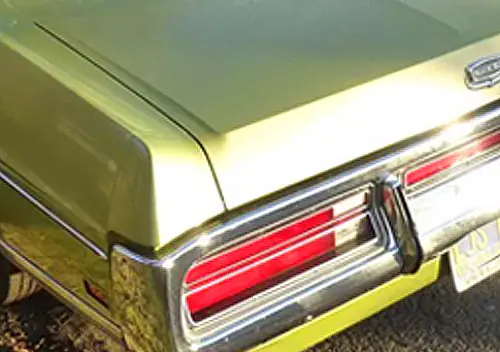


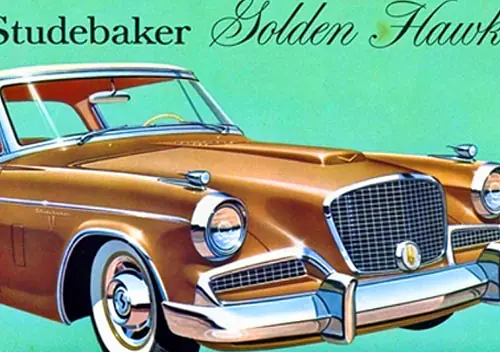


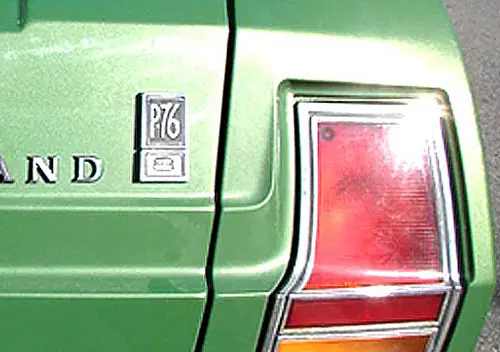
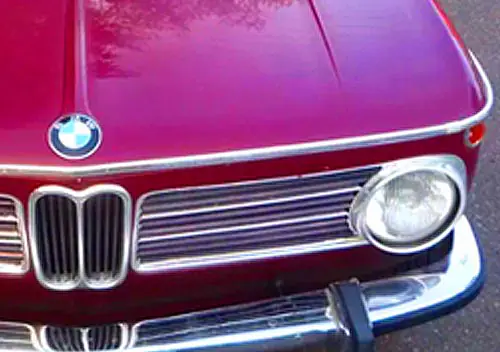



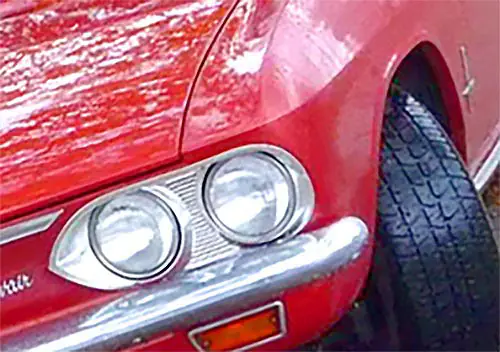


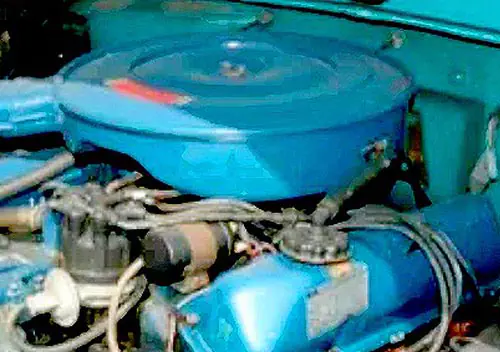



Wow, a comprehensive article about Lexus. Thank you for that, I knew them from the 90s but somehow lost contact with their modern offerings. Why are all the SUVs so ugly?
I found it pretty hard to read all about the various offerings. Do people actually care and compare between the different types? And cross-reference them to other makes?
That is what I did when I had to choose a new car 25 years ago. I liked it then, so many different cars to choose from and take test drives in. Now? To me they all more or less look the same
So many parallels to Jaguar in this story. Remember Jaguar? They were great as well until cheaper (X and S types), SUVs and EVs wasted/diluted the Jaguar Unique Selling Point. A Jaguar, when they were great, had style, elegance, wonderful interior, fast, comfortable.
Look where Jaguar is now. Much ado about nothing, just a horrible new logo. Jaguar is gone.
That should be a lesson for Lexus. Keep to your USP.
“I found it pretty hard to read all about the various offerings”
Try writing about it. It’s a mess. I’m not sure how involved a median crossover customer is in cross shopping powertrain formats within and between models, but I’m guessing its close to “not very”. I would guess the salesman first asks “hybrid or not?”, as that would narrow the within-model choices by half right off the bat.
A good example of what today’s cars are.
In addition to almost all being SUVs, one brand does not differ from the other.
Cars without soul and with horrible design. It’s not for nothing that the classics are more valued every day.
Well, I’m not sure I view the tailfins and hyper-contoured chrome front ends of the 50s and 60s as any more artful as the spindle grill and flame surfacing here. Each decade has its thing. I do much prefer the more clean organic lines of the 90s and early aughts, however. As far as soul, if I can scratch a hundred grand out of my sofa cushions, I’ll gladly take that red LC500.
Good article. I have been driving a 2020 Camry LE for 4+ years and have so much respect for the drive quality and thought behind the design of the interior and exterior of this car. I probably would have replaced it because I haven’t found a car and power source I am ready to move on to. I know this article is about Lexus but reading it and driving my car makes me realize that my lowly Camry is filled with Lexus DNA (or the other way around).
Your Camry is a nice sedan. Those predisposed to stereotype it don’t realize how well it rides, handles, and how solid it feels. The TNGA platform and redesigned suspension made an enormous difference.
Wow. Thanks for the comprehensive article. The take-away of which for me is “This is why I’ll never buy a new car again.”.
I never think about Lexus except as fancy Toyotas. I don’t even see them much as there is no dealer in my state.
What state is that?
Vermont. No Infiniti dealer either, but seven Subaru locations.
If it’s the right Toyota, a fancy Toyota is a hell of a car.
Seven Subaru dealerships? Did I read somewhere that the state slogan on license plates was going to become “Fuji Heavy Industries Proving Ground”? No?
Great name. Lexus Texus. Not a Nexus in sight.
Closest I ever got to one was a beautiful (IMHO) 1999 Avalon XLS, double black, 3.0, leather and all the bells and whistles. Didn’t need to upspend on a GS, and still wouldn’t.
The internet has made hay of the TX name.
I just can’t get past that gaping, drooping, cartoonish grill.
Not my cup of tea either but it seems to be working with many others because they’ve stuck with it for awhile.
Seen the horror show BMWs have become of late? Their design studio has gone off the deep end.
I often wondered what the next evolution of the horrid “Predator” spindle grille would be. I can only say that this isn’t a lot better!
I think the spindle looks great on the LC and IS. But the taller the front fascia, the worse it looks.
The current RX, TX, and GX seem to be the next evolution. Spindle shape still present in the contours of the fascia, but far less open “grill”. Still don’t like the looks of the RX and TX, but the GX pulls it off.
The Escalade and Palisade have shown us that it doesn’t require a spindle grill to make an SUV front end look hideous. With the enormous square footage of many crossover and truck front ends, designers really have their work cut out for them.
When Alan Mullaly assumed the CEO position at Ford in 2006 after his great success at Boeing (they need him now!) he was asked why he drove an LS400. He replied simply: “Because it’s the best car in the world”. At the time that statement was probably accurate, not sure that it would be now.
I’d add the since when is 8 sec 0-60 considered pokey? No one needs 5 second times when the trade-off is efficiency in times we desperately need to clean. up our act.
I’d further add that imo not one of these vehicles looks truly classically timelessly sophisticated. That gaping maw at the front of many of them is downright ridiculous, maybe as absurd as the Bucky Beaver BMWs. Classy they are not.
“since when is 8 sec 0-60 considered pokey? No one needs 5 second times”
The 4-cylinder Camry we exchanged for our GS350 was 8 sec 0-60. Perfectly adequate! As speedy, in fact, as the ES300s of the 90s. Amazing what a 6 speed auto will do over a 4 speed. The problem for me is that the Camry was a fairly cheap car. And a number of cheaper cars now are quicker than these base Lexuses. For some that doesn’t matter, but others may want more out a premium car with that price tag.
Point taken on efficiency, though. Hybrid power delivery can be luxuriously smooth, and the new Camry hybrid is getting 0-60 times below 7 seconds. The Civic is close to 6. 45-50mpg out of these. Amazing. If they did something about the engine thrash in these hybrids they’d be just fine for entry-level lux use.
Those 6 speed Aisin Warner trans are great one is fitted to my C5, they are considered bullet proof certainly hope so this is the first time I deliberately bought an automatic over the manual option.
An excellent overview of the brand. Yes, in most ways Lexus has stayed true to their mission, obviously with a few rather minor digressions. And yes, luxury was much more expensive in the ’90s.
But Lexus redefined luxury for the most part, precisely because they showed that a Camry based ES could be rightfully seen and accepted as a luxury car. And with greater volumes and more platform sharing, Lexus was able to reduce many prices, adjusted for inflation.
Lexus’ influence on the German luxury brands was huge, as they largely had to follow the Lexus playbook, by reducing costs and prices and making it up by volume.
I’m not a prospective Lexus buyer, although Stephanie rather likes their interiors (who doesn’t?), but for the most part I understand what they’re doing and it continues to work for them quite well. The hybridization has been a huge success for Toyota and Lexus, as the demand for hybrids currently is massive, as an alternative to EVs. Nissan is in the dumpster right now for lack of hybrids, as is VW. They just today announced their new Tiguan, their best selling model, but no hybrid. That’s the kiss of death in the current market.
Thanks Paul. Toyota’s array of hybrid powertrains is impressive. From the modest 130hp Corolla unit to the ubiquitous 2.5-liter hybrid to the turbo hybrids to the 400hp V6 hybrid, they’ve got a broad range of acceleration and fuel economy covered. It’s the noise of the gas engines when they kick in that makes the hybrids unseemly for a Lexus. If they could reduce that to a background murmur I’d be all-in.
Full disclosure: we have a NX 350 on order from the factory. Should be here in mid-December. So it’s fun to either validate or torture myself with reading what other people think I should buy….instead.
I drove comparable Mercedes,Hyundai, Audi and Infinity. In the Pacific NW, we actually need AWD (try driving Seattle or Portland hills in FWD). And I know NX is a Rav4 with lipstick… and botox, a boob job and… Our Luxury model has every feature I want to escape from the politics of the next 4 years.
I get it about AWD, when it matters it really matters. Reviews have been pretty favorable about the NX. It’s a good vehicle, it just isn’t to my particular taste.
This past summer we bought a 3 yr old RAV4 with 40k miles from our daughter’s company in Denver (no salt!) when they decided to de-accession it. A 2.5 4 cyl naturally aspirated, 8 Spd AW trans (no cvt), so fairly basic for a newer car. We’ve never owned a Toyota before having had other Japanese makes over the last 25 years, but know that their reputation is gold so we went for it without hesitation.
The RAV needs our needs well and is excellent in very respect so far. We have no great need for “luxury”, heck, it has heated seats, steering wheel a very nice interior with fabric seats (we greatly dislike leather), nice sound, some rotary knobs still (but more gizmos than we like). Plenty of power for everyday and handles nicely. It’s all we need and we love it, and expect to do so for at least 10 years! It’s quite likely our last car at our age and most satisfactory.
My thoughts on cars in general for decades has been “OK…so”? There are just so many brands/models that it boggles the mind.The ability to quickly recognize a vehicle at a glance, like it matters or anyone cares? They are indistinguishable. And the total cost (vehicle, insurance, maintenance, etc.), wow!
The industry has long ago reached the point of diminishing returns in practical offerings and price to the average customer. It will catch up to them.
I will keep my 2007 Camry, thank you.
“The industry has long ago reached the point of diminishing returns in practical offerings and price to the average customer.”
People have been choosing to dramatically spend up on larger and more heavily equipped vehicles for some time, but I think there are still some relatively affordable gems out there. The new Civic hybrid comes to mind–at $30K it is the same inflation adjusted price as a 2007 Civic EX but it’s roomier (big enough to be a midsize sedan for a family of 4), more refined, far more powerful. A base trim Accord or Camry is still a well equipped car with a sticker price well under what most people are paying for new vehicles. Gotta stay away from the mid-upper trim trendy crossovers and crew cab pickups that so many are buying.
“(With the) 7-Series and S-Class becoming rolling bordellos of crass and meaningless glitz…
How TRUE!!
I really think they’re running out of ways of differentiating these flagships from far less expensive cars and are resorting to cheap gaudy tricks. The problem is other makers, Hyundai/Kia in particular, are really good at quickly copying and integrating approximations of these flourishes, so once they do what will MB and BMW turn to next?
Surprising to me that not one mention in the article or comments about the true differentiator between Lexus and everyone else in this category—-service. I was, but am not now, the owner of 2 Lexus. Why don’t I still own them? Boring. But keep reminding yourself of that when you visit your M-B, BMW, Audi, Land Rover, etc. dealer. No one even comes remotely close after all of these years.
I live an hour from the nearest Lexus dealership but 10 minutes from a Toyota one. So service is one brand attribute that I, unfortunately, don’t get to experience.
You’ll be visiting that BMW, Benz, Audi, and especially Land Rover dealer quite often. And for the vast majority of drivers looking for dependability, boring is good.
The wife is on her 3rd ES (2002,2006, 2017) and is one of those drivers for whom a nice cushy Buick or Lincoln Interstate-cruiser sedan (the likes of which haven’t been made in years) would have done the job. I’ve seen the photos of the bizarre screen treatment in the 2025 China-market ES’s interior so if she’s gonna get another, it needs to be before that hits US shores.
One thing I’m not sure was addressed, I was born too late to be a big fan of a lot of chrome but I recognize how a touch of brightwork can give something an upscale look and feel. The current RX’s nose and grille treatment do NOT do that, it’s like a window or door screen now, and the TX follows suit. My Mazda’s front looks classier.
I think the spindle/diablo grille caught hell from a lot of keyboard warriors cross-shopping used Challengers and used Camaros. Credit to Lexus for at least trying something and being distinctive. It makes more sense on a field unbroken by the bumper as on the late 2010s – earlier 2020s models (and the 2017 in the photo) than when first shown – but it does seem like Lexus is trying to move on from it with NO CLUE how.
Looks like the 2025 China-market is grafting the infotainment screen from the rest of the lineup on there. It’s not the most graceful integration since that interior has been out awhile and was not originally designed for that enormous screen. But from a usability standpoint I’m guessing it is far better than the current one.
Looks like your 2017 ES uses the same mouse controller as my GS. I like having the screen tucked far forward (since it’s not touch) so it doesn’t dominate the dashboard design but I’m not a fan of the mouse. You get used to it, but there are a few hard buttons missing that would make my driving life easier. Like an A/C on/off button. I know they expect me to just leave everything on Auto, but I don’t like the car ramping up the vent speed to max.
I thought Toyota couldn’t get much worse than when they introduced the Predator faced front ends. The new body colored Predator front ends proved me wrong. However, I’m sure Toyota’s well earned reputation for reliability will make up for those hideous front ends.
The spindle grill has been a complaint for nearly a decade and Lexus doesn’t seem to be suffering for it. Audi drew the same complaints years ago for their large grills and it became normal. Love it or hate it, you can tell if it’s a Lexus from a long way off, and brand recognition and visibility can be a good thing.
My late wife and I have had four of them:
’95 LS 400, 220K miles
2001 RX300, 315K miles (gave this one to a niece at 180K miles, and she just retired it)
2010 RX350, 140K miles
2019 RX350L, current ride, 45K miles. Don’t drive as much now (77). Opted for the L version for additional small child carrying capacity with assorted relatives and offspring.
The machines are very reliable, very comfortable, very quiet and refined, plus superb dealer service, and they retain their value. Younger relatives and friends kid me about driving “Tokyo Buicks” which, when I think about it, is really quite a complement. Back in the 50’s, when I was first getting interested in cars, Buicks were, justifiably, held in high esteem by “gentlemen of a certain age” in no small measure for the attributes now associated with Lexus. And, yes, when I was a junior officer in the Navy I drove a Porsche (first a 914 and then a 911) and later while in grad school and working had Z’s and an RX 7, before getting married and driving various sedans. Buying houses in coastal Southern California can reorient ones expenditure patterns. Those Lexus attributes correspond nicely with ageing boomer automotive preferences, especially when negotiating urban area traffic. I, for one, would very much like to see GM match Lexus attributes with Buick (or Cadillac, for that matter). In the meantime, I’ll continue to get my automotive kicks reading the excellent and informative articles and commentary on CC. Cheers
“Tokyo Buicks”
That’s good. I’ll have to remember that.
The “stodgy” and “frumpy” 2002 es redesign had one of the best Lexus interiors of all time, which was a huge improvement over the prior generations and better than the following two.
Yes, that gen of ES had a remarkably nice interior. Really masterful blend of the red high-gloss wood with two-tone soft touch materials and just enough chrome embellishment here and there. Excellent design.
Dashboards are warped at the airbag cover in nearly every one I’ve seen for sale lately, though. It peels up behind the cut line, exposing the orange foam beneath, reminding me of the peeling dashboards in 1990s Kias. Highly visible location too, really detracts from the car. Some material QAQC failure there.
A great, comprehensive piece. Been looking to replace my wife’s 2009 ES350, which has be perfect. The only non-maintenance repairs in 15 years were a tailight bulb and a tire pressure sensor. Incredible. The wife was thinking that maybe this time she wants an SUV, so we looked at the RX350. Nice vehicle, but was turned off by the buzzy 4 cylinder. What a mistake to drop the V6 from this line. Really can’t understand why Lexus did this. The 4 cylinder doesn’t get that much better mileage and requires premium fuel. It must be a real slug in the much heavier TX. Anyway, she’s getting another ES with the tried and true V6. Buttery smooth, 0-60 in under 7 seconds and decent fuel economy. Boring perhaps, but I look forward to another 15 years of stress free, reliable ownership.
Congrats on the new ES350. Get that V6 while you can!
Great writeup Petrichor.
I agree with your concern about brand dilution. We’ve only owned two Lexii, the first being a well loved 2003 LS 430 from 2014 to this year. I loved that engine, like a locomotive wrapped in silk. The car felt like it was carved from a solid block of steel, and was incredibly reliable. Total maintenance costs were 30 bucks a month since I did my own work, timing belt service included.
It was that positive experience that led me to shop for its replacement, a 2017 RX 350. I was open to ’16 to ’22, because I didn’t want the touch screen and was comfortable with the mouse interface having done CAD design for the last 25 years of my career. I think the instrument stack on the console is a great balance of buttons and knobs vs. having a glass cockpit., and the analog clock and CD player work for me.
But per your argument, I see a leakage of Toyota DNA into the vehicle, much more than in the golden years of the early 2000s. It’s extremely comfortable, excellent visibility, love the 8 speed gearbox but I can see some cost cutting going on.
Though I intend to keep the car as long as I can, and enjoy driving it, some gripes:
Engine: the 3.5 V6 isn’t as smooth as the 3.0 in my gen 2 Avalon. It has a grumbling feel and sound, nothing like the old 430. It also runs out of breath about 70, possibly due to aerodynamics.
No seat heating or cooling in the back seats. No USB ports either. And you can’t lower the rear seat backs while standing at the rear doors. You have to use the levers in the rear compartment.
The buttons on the lower left dash that open the rear hatch, start the heated steering wheel, etc. feel cheap. And that little fold out tray in the same area has a push button to open it, but no light anywhere to help you find it in the dark! Cmon Lexus, just one more LED please?
And though the car rides nicely, NVH on poor road surfaces, especially weathered asphalt, needs much improvement.
But it’s a nice car, I was ok buying one used (just turned 55K), but I’d sure not drop 60 large for a new one.
The 3.5 in my GS isn’t as smooth at idle as the old 3.0s in my opinion. Perhaps it is the direct injection system, they tend to make a bit of noise. Smooth on the move, though.
I’m not surprised the RX isn’t as refined as your LS430. That was still when the LS was riding high and taking comparison test wins.
Generic SUVs. I don’t want an SUV, I don’t want a screen.
Petrichor – A+ on your assignment! What a glorious essay! I work at a private school where the carpool line resembles a Suburban, Yukon and name-the-luxury-brand car show. I have to wholeheartedly agree a four cylinder, whether turboed, double turboed, hybridized, or any combination thereof doesn’t sound high quality like a smooth 6 or 8 cylinder. I don’t care what you paid for your vehicle, it sounds cheap.
A good friend just paid an ungodly amount of money to buy a certified, low mileage 2020 Land Cruiser. She was replacing her longtime best friend, a bought-new 2003 4-Runner. After scores of test drives, she chose the Land Cruiser because it was the perfect mix of luxury, stoutness, and smoothness she wanted to find for the next couple of decades.
Again, kudos on a tremendous article!
I remain dismayed that we now live in a world where V8s are only for the rich and V6s are only for the near-rich. Everyone will want to tell me how wonderful modern turbo 4s are, but they are not the same.
The NX will be our second Lexus; their service is really superior, from what we hear from others driving other marques. There are no shortage of dealers in the PacNW.
Just saw a survey: the average price of a new car is $48,000±. Ford is the highest in the mid-$50s (probably Broncos and F150s).
This is what I think of when I look at the vehicle in the first picture. “By your command!”
Bitter Beer face.
What I see
Quite the article. Excellent stuff, sir.
I wonder if the faces of the various Lexuses look like they do from the effect of choking on their spiky (and idiotic) nomenclature? Seems reasonable, though I’ve got to admit that, in the way of these things, the spindles and other cringles of the styling have grown on me, and I – whisper it – don’t really mind the current line-up, by and large.
Which is either an expression of age-related bewilderment, or a reflection upon the execrable state of the rest of what’s out there: or, more likely, in light of the fact that all of the stuff us old-car farts complain about in 2024 sells as well as, say, a gorgeous ’67 Impala did in ’67 – or, worse, as well as some ’75 or ’85 vinyl-puff horror, from any maker did in ’75 or ’85 – that I’m as time-bound as anybody, and that these current times will one day favour these crapulent things for admiration and collection by those alive and young in the time of their existence.
I’ve been in a fair number of the current hybrid Camrii, and they were all really impressive, and felt anything but cheap. However, if one was being fussy – and at the Lexi prices charged for Lexi, one bloody-well should – the idle and accelerative complaints from that moany 2.5 were startingly off-piste. I just assumed that that graininess was bushed and damped and otherwise ironed-out by the posher brand, but it seems not. That seems a really poor decision, though perhaps it’s not able to be avoided, but it’d would put me off buying a Lexless so-equipped.
Over all, though, I reckon Toyota have done extraordinary things with their posh brand. They’ve managed, through both the sheer quality of output AND relentless – there’s a word – brand management that’s been pretty much unmatched in car history, to attach all of the uber-quality idea to any old rubbish they’ve churned out.
So it’s probable a grumpy four won’t ever matter, however much those who know better – us, for example – may complain.